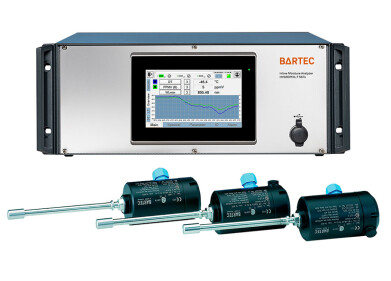Measurement and Testing
What Are LCO Batteries?
Oct 19 2022
Of all the cell chemistry technologies available to manufacturers, Lithium Cobalt Oxide (LCO) is one of the most coveted. With high specific energy and long runtimes, LCO batteries are ideal for powering smartphones, tablets, laptops, cameras and other handheld devices.
A recent report published by global market research and consulting organisation Nova One Advisor revealed just how dominant LCO batteries are. The technology accounts for more than 31% of total revenue in the lithium ion battery market, with more growth expected over the coming decade. Analysts expect the international lithium ion market to hit a value of US$278 billion by 2030. This represents a CAGR of more than 18%. LCO batteries will play a big role in driving the global lithium ion battery industry and hitting the US$278 billion forecast.
The anatomy of LCO batteries
LCO batteries feature a layered cobalt oxide cathode, which helps improve energy density. Cobalt cathodes are also renowned for their long life cycles. This is important for batteries that power handheld devices, which are often depleted daily. LCO cathodes are made from graphite carbon.
The limits of LCO batteries
LCO batteries are extremely diverse, however they’re not suitable for all applications. Below, we list some of the limits of LCO batteries.
- Unsuitable for energy-intense applications such as EVs and energy storage systems
- The use of raw materials like cobalt increases manufacturing costs of LCO batteries
- Low thermal stability makes safety an issue in some LCO batteries
The future of LCO batteries
Scientists and engineers are continually exploring new ways to improve battery performance. At Imperial College London, researchers from the Department of Chemical Engineering have developed polymer-based batteries using organic electrode materials. Dr Qilei Song led the research and maintains the technology could have exciting implications for the sustainable energy storage sector.
The goal was to eliminate the need for inorganic materials such as lithium cobalt oxide, which are difficult to mine and toxic to the natural environment. Instead, the team used organic electrode materials and carbon additives to design batteries with excellent stability and cycling performance.
“To solve the scientific challenges associated with organic electrode materials, we developed new polymer electrode materials that combine solution-processability, redox activity, and sub-nanometre pores,” explains Dr Anqi Wang, lead author of the study. “Our molecular design approach is a synergistic combination of organic electrode materials and porous polymers developed in recent decades.”
A sustainable approach to energy
Designing sustainable and eco-friendly batteries is part of a broader goal to address issues like climate change and air pollution. In the EU, the Industrial Emission Directive (IED) to protect the health of humans and the environment. Find out more about the latest updates to the initiative in ‘Industrial Emission Directive (IED) implementation updated with focus on calibration and instrumentation gases necessary to comply with the new regulatory requirements.’
Digital Edition
PIN 25.1 Feb/March
March 2024
In This Edition Safety - The technology behind the ION Science Tiger XT - Safety with ammonia and LOHCs as hydrogen carriers Analytical Instrumentation - Discussion on new tribology te...
View all digital editions
Events
Apr 24 2024 Mumbai, India
Apr 24 2024 Jakarta, Indonesia
Apr 28 2024 Montreal, Quebec, Canada
Apr 30 2024 Birmingham, UK
May 03 2024 Seoul, South Korea


















